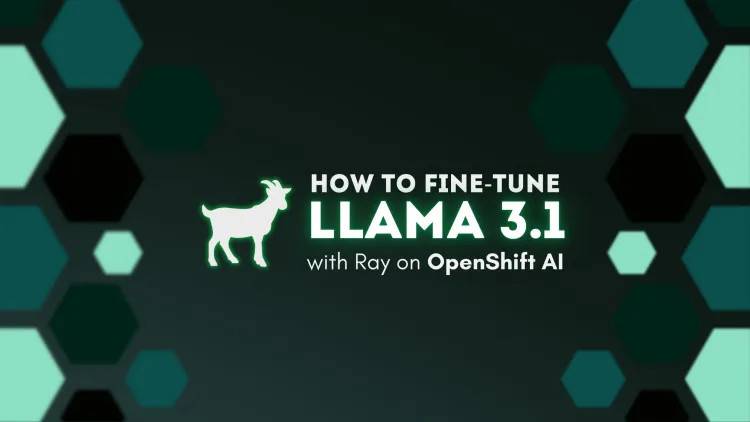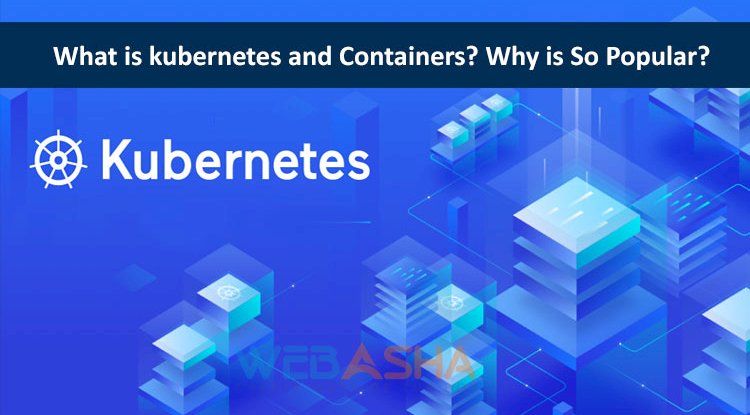How to Fine-Tune Llama 3.1 with Ray on OpenShift AI ? The Complete Guide
Fine-tuning Llama 3.1 with Ray on OpenShift AI combines the power of a state-of-the-art language model with scalable infrastructure and distributed computing. By leveraging Ray, you can accelerate training through parallel processing, while OpenShift AI ensures seamless resource management and scalability. This process enables the customization of Llama 3.1 for domain-specific tasks, such as chatbots, content generation, or sentiment analysis. Although fine-tuning large models can be complex, tools like Ray and OpenShift AI simplify the workflow, optimize resource usage, and make deployment efficient.

Fine-tuning large language models like Llama 3.1 is an exciting task that allows developers to customize the model for specific use cases. Whether it's improving chatbot responses, enhancing content generation, or solving business-specific problems, fine-tuning ensures the model performs at its best. In this blog, we’ll explore how you can fine-tune Llama 3.1 using Ray and OpenShift AI—in simple and easy-to-understand terms.
What Is Fine-Tuning?
Fine-tuning is the process of taking a pre-trained model (like Llama 3.1) and further training it on a smaller dataset tailored to your specific needs. This makes the model better at tasks such as answering customer queries, summarizing documents, or translating niche languages.
Why Use Ray and OpenShift AI for Fine-Tuning?
Ray
Ray is an open-source framework designed to scale Python-based machine learning tasks easily. It’s great for running distributed training jobs, meaning you can train your model faster by splitting the work across multiple machines.
OpenShift AI
OpenShift AI is a Kubernetes-powered platform that simplifies deploying, managing, and scaling AI workloads. It supports distributed frameworks like Ray, making it perfect for fine-tuning large models like Llama 3.1.
Why Combine Ray and OpenShift AI?
- Speed: Distributed training scales fine-tuning across multiple GPUs or machines.
- Efficiency: OpenShift AI manages resources, while Ray simplifies coding.
- Flexibility: You can customize and scale fine-tuning for your unique dataset.
Step-by-Step Guide to Fine-Tune Llama 3.1 with Ray on OpenShift AI
Step 1: Set Up Your Environment
-
Install OpenShift AI:
- Make sure you have an OpenShift cluster up and running. Install OpenShift AI tools (like
kubectland OpenShift CLI).
- Make sure you have an OpenShift cluster up and running. Install OpenShift AI tools (like
-
Install Ray:
- Use Python's package manager to install Ray:
-
Get the Llama 3.1 Model:
- Download the pre-trained Llama 3.1 model weights from Meta’s repository or Hugging Face.
-
Prepare Your Dataset:
- Format your dataset in a machine-learning-friendly way, such as JSON or CSV. Each entry should have input (like a question) and output (like an answer).
Step 2: Configure Ray on OpenShift AI
-
Create a Ray Cluster on OpenShift AI:
- Deploy a Ray cluster on OpenShift by creating a YAML configuration file (
ray-cluster.yaml) like this: - Apply the configuration:
- Deploy a Ray cluster on OpenShift by creating a YAML configuration file (
-
Verify the Cluster:
- Check the status of the cluster to ensure all nodes are running:
Step 3: Fine-Tune Llama 3.1 with Ray
-
Write the Fine-Tuning Script:
Here’s an example Python script using Ray for distributed fine-tuning: -
Run the Script:
Submit your Python script to the Ray cluster for execution: -
Monitor Training:
- Use Ray Dashboard or OpenShift AI’s monitoring tools to track GPU usage, training progress, and logs.
Step 4: Save and Deploy the Fine-Tuned Model
-
Save the Model:
- Once training is complete, save the fine-tuned model to storage.
-
Deploy with KServe (Optional):
Use KServe to deploy your fine-tuned model on OpenShift for serving real-time predictions.
Applications of Fine-Tuned Llama 3.1
- Chatbots: Fine-tuned models can provide accurate and context-specific responses for customer service.
- Content Creation: Generate high-quality, domain-specific text like product descriptions or blog content.
- Language Translation: Customize translations for technical or niche terminology.
- Sentiment Analysis: Analyze customer feedback with greater accuracy for business insights.
Benefits of Using Ray and OpenShift AI
- Speed Up Training: Distributed training reduces the time required for fine-tuning.
- Scalability: Easily scale your training jobs by adding more workers to your Ray cluster.
- Efficient Resource Management: OpenShift AI ensures optimal utilization of GPUs and other resources.
- Simplified Workflow: Both Ray and OpenShift AI abstract the complexities of distributed training.
Challenges and Best Practices
-
Challenge: Data Preparation
- Solution: Ensure your dataset is clean and properly formatted before training.
-
Challenge: Memory Management
- Solution: Use smaller batch sizes if you face GPU memory issues.
-
Challenge: Debugging Parallel Jobs
- Solution: Use Ray’s logging and monitoring tools to identify bottlenecks.
Conclusion
Fine-tuning Llama 3.1 with Ray on OpenShift AI opens the door to creating highly efficient, custom AI models for real-world applications. By leveraging distributed computing and Kubernetes, you can reduce training time, improve scalability, and focus on building impactful solutions. Whether you’re an AI enthusiast or a developer looking to deploy advanced models, this combination ensures you can fine-tune and deploy large language models seamlessly.
FAQs
1. What is fine-tuning in machine learning?
Fine-tuning is the process of taking a pre-trained model and further training it on a specific dataset to adapt it for a particular task or application.
2. What is Llama 3.1, and why is it popular?
Llama 3.1 is a state-of-the-art large language model by Meta, known for its ability to generate high-quality text and perform complex natural language processing tasks.
3. Why should I use Ray for fine-tuning?
Ray is an open-source framework that simplifies distributed machine learning. It enables faster fine-tuning by distributing tasks across multiple GPUs or machines.
4. How does OpenShift AI help with fine-tuning?
OpenShift AI manages the infrastructure needed for fine-tuning, such as Kubernetes clusters, resource allocation, and scaling, allowing you to focus on training your model.
5. What are the prerequisites for fine-tuning Llama 3.1 with Ray and OpenShift AI?
You’ll need access to an OpenShift AI cluster, Ray installed on the cluster, the Llama 3.1 model, and a properly formatted dataset for fine-tuning.
6. What is the role of the dataset in fine-tuning?
The dataset is critical in fine-tuning as it determines how the model adapts to your specific use case. A clean, well-structured dataset ensures better model performance.
7. What tools are required to fine-tune Llama 3.1?
You need tools like Ray (for distributed training), OpenShift AI (for infrastructure management), and frameworks like PyTorch or Hugging Face Transformers for model training.
8. Can I use fine-tuned Llama 3.1 for real-time applications?
Yes, once fine-tuned, the model can be deployed for real-time applications like chatbots, content generation, and sentiment analysis using tools like KServe.
9. What are some challenges in fine-tuning large models?
Challenges include managing GPU memory, debugging distributed training, ensuring proper dataset formatting, and optimizing hyperparameters for the best performance.
10. Is fine-tuning Llama 3.1 expensive?
Fine-tuning can be resource-intensive, especially for large models, but using efficient tools like Ray and OpenShift AI can optimize resource usage and reduce costs.












![Top 10 Ethical Hackers in the World [2025]](https://www.webasha.com/blog/uploads/images/202408/image_100x75_66c2f983c207b.webp)

![[2025] Top 100+ VAPT Interview Questions and Answers](https://www.webasha.com/blog/uploads/images/image_100x75_6512b1e4b64f7.jpg)









